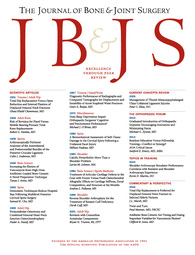
ARTHROPLASTY
Differences in outcomes between standard and high-flexion knee prosthesis in TKR
This report has been verified
by one or more authors of the
original publication.
J Bone Joint Surg Am. 2010 Nov 17;92(16):2634-42.
127 consecutive patients with 170 primary osteoarthritic knees, scheduled to undergo the total knee arthroplasty procedure, were randomized to the two variants of implant components: one with a high-flexion posterior-stabilized rotating platform mobile bearing prosthesis and another with a standard PFC implant device. Following the same surgical technique and rehabilitation protocol, the aim was to determine if the specially-designed implant met the high demands of flexibility for sitting and squatting for the treatment group. In the two year observation period, no significant differences in the range of motion, or knee function scores,and patient satisfaction were observed between the control and the intervention group.
Unlock the full ACE Report
You have access to {0} free articles per month.Click below to unlock and view this {1}
Unlock NowCritical appraisals of the latest, high-impact randomized controlled trials and systematic reviews in orthopaedics
Access to OrthoEvidence podcast content, including collaborations with the Journal of Bone and Joint Surgery, interviews with internationally recognized surgeons, and roundtable discussions on orthopaedic news and topics
Subscription to The Pulse, a twice-weekly evidence-based newsletter designed to help you make better clinical decisions
Exclusive access to original content articles, including in-house systematic reviews, and articles on health research methods and hot orthopaedic topics
Or upgrade today and gain access to all OrthoEvidence content for just $1.99 per week.
Already have an account? Log in


Subscribe to "The Pulse"
Evidence-Based Orthopaedics direct to your inbox.
{0} of {1} free articles
Become an OrthoEvidence Premium Member. Expand your perspective with high-quality evidence.
Upgrade Now













































































